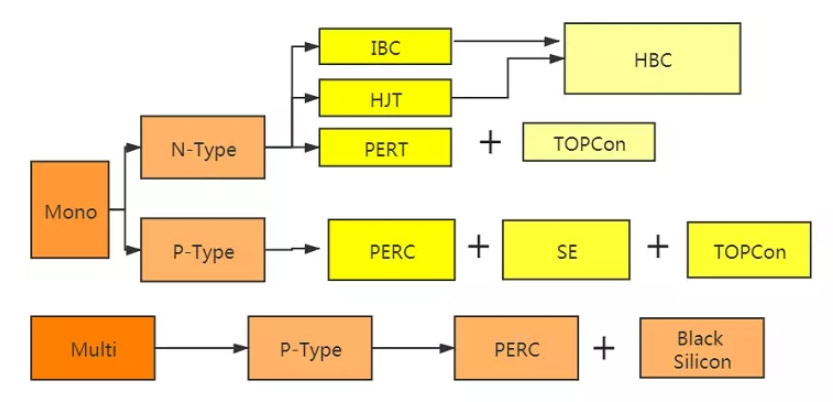The main element in the solar panel power inverter is the solar cell, which can be made from many different materials and to provide the known photo-voltaic effect for all. But the most preferred and used material is the silicon, because its relatively inert element, most abundant in the earth crust (it represents more than 25% of its weight), and its lower cost element.
The raw material in which we extract the silicon from is the sand or quartz which is processed under a certain condition to produce high pure silicon. This pure silicon is used not only in solar cell manufacturing, but also in semi-conductor’s industry to produce computers chips.
The silicon in its crystalline form has chemically unique properties and can be used in manufacturing the solar cell as following:

The silicon atom has fourteen electrons, 2 of them are in the first shell, 8 of them are in the second shell, and remaining 4 are in the outer shell, so the 2 first shells are completely full, and outer shell has just 4 electrons. This atom is always looking for a way to full its outer shell to 8 electrons, and this the wonder of physics science. In order for the silicon atom to do so, it shares 4 electrons with other 4 nearby silicon atoms and create crystalline silicon.
This pure crystalline silicon is electrically poor in conductivity, because there no longer be free electrons to move, that makes the solar scientist to add impurities in a form of other atoms of boron and phosphorous to solve this issue and to create free electrons with the ability to move.
By adding phosphorous with 5 electrons in its outer shell to silicon, this is called N-type silicon, and we refer to as negative part because it has abundance amount electrons, so it has much better conductivity than pure silicon. Also, by adding boron with 3 electrons in its outer shell this is called P-type silicon, and we refer to as positive part because instead of having free electrons, it has free opening with positive charge.
The crystalline solar cell is typically formed by connected N-type silicon with P-type silicon via heat and pressure, then solar cells will be connected in series, and framed with output cables to build the solar panel power inverter.
When the solar panel is exposed to sun light, the photons will break silicon bonds, letting more free electrons to leave their atom looking for hole to fall into it, and that is causing the electrical current flow, and we finally got direct electrical current and voltage "electricity".
